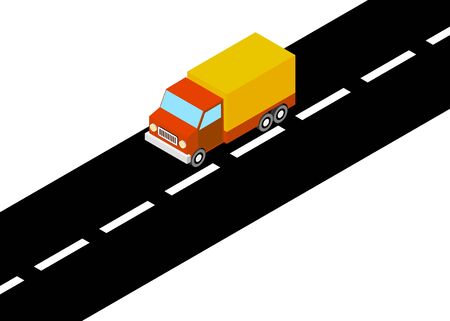Overview of India’s New Motor Vehicle Act
The New Motor Vehicle Act, as updated and set for implementation across India in 2025, represents a significant step forward in the country’s effort to enhance road safety, streamline traffic management, and encourage responsible driving behaviour. The primary objectives of this revised legislation are to reduce road accidents, ensure stricter compliance with traffic rules, and modernise the regulatory framework for vehicles and drivers throughout the diverse states of India. This update is rooted in a growing national concern regarding the increasing rates of traffic-related fatalities and injuries, which have often been attributed to lax enforcement and outdated regulations.
From a cultural perspective, the new Act takes into account India’s unique road conditions, varied vehicle usage patterns, and the socio-economic diversity that defines urban and rural transportation. The law is designed not only to be stringent but also sensitive to local realities such as the widespread use of two-wheelers, auto-rickshaws, and regional transport practices. By incorporating higher penalties for violations, digitalisation of processes, and provisions for improved driver education, the Act aims to foster a culture of accountability on Indian roads while respecting traditional mobility habits. This holistic approach reflects both the government’s commitment to public safety and its recognition of the complex tapestry that makes up Indias transportation ecosystem.
2. Key Changes in Traffic Rules 2025
The Motor Vehicle Act of 2025 brings several substantial amendments designed to address the unique challenges faced on Indian roads. These changes are tailored to suit the daily realities of Indian commuters, whether navigating busy city streets, rural highways, or local bylanes. Below, we highlight the major updates and how they will impact everyday travel for citizens across India.
Major Amendments Introduced
| Key Amendment | Description | Impact on Indian Roads |
|---|---|---|
| Stricter Penalties for Violations | Increased fines for offences like overspeeding, drunk driving, and signal jumping. | Discourages rash driving; promotes safer habits, especially in metros like Delhi & Mumbai. |
| Mandatory Helmet & Seatbelt Usage | Compulsory use for all riders and passengers, including pillion riders and rear-seat occupants. | Addresses rising accident rates in tier-2 and tier-3 cities. |
| Updated Pollution Norms | Tighter checks for emission compliance during routine vehicle inspections. | Improves air quality in cities like Bengaluru and Chennai; encourages use of CNG/Electric vehicles. |
| Digitisation of Documents | E-documents (DL, RC, insurance) now accepted during traffic checks via mParivahan & DigiLocker apps. | Makes life easier for tech-savvy youth and daily office-goers; reduces paperwork hassles. |
| Revised Speed Limits | Speed limits now differentiated for urban, rural, expressway, and school zones. | Caters to diverse commuting environments; helps reduce accidents near schools and crowded markets. |
| Enhanced Pedestrian Safety Rules | Special focus on zebra crossings, footpaths, and penalties for non-compliance. | Supports safety in market areas and improves walkability for senior citizens and children. |
How These Changes Affect Local Commuting Practices
The new rules reflect ground-level realities such as frequent jaywalking, two-wheeler congestion, autorickshaw overloading, and the growing adoption of electric vehicles in Indian cities. For instance:
- Bengaluru’s IT workforce: Digital documentation reduces hassles during random police checks on Outer Ring Road.
- Pune’s college students: Stricter helmet laws mean no more riding “doubles” without proper headgear.
- Kolkata’s elderly population: Improved pedestrian rights make crossing chaotic intersections safer.
- NCR carpoolers: Revised speed limits demand more discipline even on wide expressways like the Yamuna Expressway.
Localized Enforcement Measures
The government has empowered state transport authorities to implement region-specific campaigns—such as “No Honking” drives in Mumbai or “Safe School Zones” in Hyderabad—ensuring that the amended rules are not just on paper but actively enforced according to local conditions.

3. Penalties and Fines: What Has Changed?
The 2025 amendments to India’s Motor Vehicle Act have introduced a significant overhaul of penalties and challan procedures, aiming for stricter compliance and enhanced road safety. The revised fines are not only higher but also more diversified, targeting specific violations such as overspeeding, drunken driving, use of mobile phones while driving, and failure to wear helmets or seatbelts.
Revised Fine Structure
Under the new rules, common offences attract considerably steeper fines. For example, the penalty for drunk driving now starts at ₹10,000 with possible imprisonment up to six months for first-time offenders. Overspeeding can incur fines ranging from ₹1,000 to ₹2,000 for light motor vehicles and even higher for repeat offences. Notably, those caught without valid insurance or driving licences face instant penalties exceeding ₹5,000.
Challan Procedures: Digital and On-the-Spot Enforcement
The introduction of e-challan systems has streamlined the penalty process across Indian cities. Police officers are now equipped with handheld devices that instantly generate digital challans linked directly to the offender’s vehicle registration details via the national Vahan database. Offenders receive SMS notifications and can pay fines through online portals like Parivahan Sewa or authorised UPI apps. This digital push reduces corruption and increases transparency in enforcement.
Implementation on Indian Roads
The enforcement drive is visible on highways and urban centres alike. Traffic police have intensified patrolling and set up automated surveillance using CCTV cameras at major junctions. Repeat violators can expect harsher penalties, including vehicle impoundment or suspension of driving privileges. The government has also empowered local authorities to conduct frequent checks during peak hours and festival seasons when violations tend to rise.
In summary, the updated Motor Vehicle Act’s penalty provisions send a clear message: compliance is no longer optional. With advanced monitoring tools and stiffer fines, Indian drivers are urged to strictly follow traffic regulations for their own safety and the broader public good.
4. Impacts on Common Road Users: Two-Wheeler, Auto, and Truck Drivers
The New Motor Vehicle Act 2025 brings significant changes that directly affect the daily lives of India’s most common road users: two-wheeler riders, auto-rickshaw drivers, and truck operators. Understanding these changes is crucial for lakhs of Indians who depend on these vehicles for both personal and professional purposes.
Two-Wheeler Riders: Stricter Helmets & Safety Compliance
With two-wheelers being the backbone of Indian urban mobility, especially in cities like Bengaluru, Pune, and Chennai, the new rules place special emphasis on helmet quality (ISI mark mandatory), pillion rider safety, and speed regulation. Fines for riding without a helmet have increased significantly, and traffic police are now authorised to check for tampered or non-standard helmets at nakas (checkpoints).
| Offence | Previous Penalty | New Penalty (2025) |
|---|---|---|
| No Helmet (Rider/Pillion) | ₹500 | ₹2,000 + License Suspension (3 Months) |
| Triple Riding | ₹1,000 | ₹3,000 |
| Overspeeding | ₹1,000 | ₹2,500 + Traffic School Mandatory |
Auto-Rickshaw Drivers: Digital Meter Mandate & Fare Regulation
The humble auto—found from Delhi’s Connaught Place to Mumbai’s Dadar—faces new compliance measures. All autos must now install GPS-enabled digital meters to prevent meter tampering and ensure fair fares. The Act also mandates regular emission checks (PUC certificates) and stricter licensing norms to curb unregistered operations.
- Digital Meter Fine: ₹5,000 for first offence; repeat offences can lead to permit cancellation.
- No Uniform/ID Displayed: ₹1,000 penalty; strict enforcement in metro cities.
- No PUC Certificate: ₹2,000 fine per instance.
Truck Drivers: Load Limits & Document Compliance
Lorry/truck drivers—integral to India’s logistics—from NH44 to Golden Quadrilateral corridors are under sharper scrutiny. Overloading attracts steep penalties and even vehicle seizure. The Act also enforces digital documentation (e-challans) and compulsory FASTag usage for tolls across all states.
| Violation | Old Fine | New Fine (2025) | Additional Action |
|---|---|---|---|
| Overloading Goods | ₹2,000/tonne excess | ₹20,000 + ₹2,000/tonne excess | Pakka Seizure of Vehicle Possible |
| No Valid Permit/RC Book | ₹5,000 | ₹10,000 + Blacklisting Risk | |
| No FASTag/Electronic Toll Payment | N/A (New Rule) | Toll Fee x 2 as Penalty |
Cultural Sensitivities & Real-World Impact
The Act recognises on-ground realities by offering grace periods for rural license renewals and simplified digital services in regional languages like Hindi, Tamil, Telugu, Marathi, and Bengali. However, enforcement remains stricter in urban pockets like Mumbai suburbs or Bengaluru tech corridors where traffic congestion is severe.
Key Takeaway for Indian Road Users:
The 2025 reforms focus on discipline (“chalan ka darr”), safety-first mindset (“Suraksha pehla”), and digital transparency—impacting everyone from college-going bikers in Tier-2 towns to long-haul truckers on national highways. Staying updated with these provisions ensures fewer hassles during routine naka bandis or RTO inspections.
5. Role of Technology and Digital Solutions
Embracing Digital Transformation in Traffic Management
The Motor Vehicle Act 2025 marks a significant leap towards digital governance in India’s transport sector. Technology integration is now central to enforcing traffic rules, improving transparency, and delivering citizen-friendly services. This section analyses how e-challan systems, mParivahan app, DigiLocker, and other digital solutions have been woven into the new framework.
e-Challan: Streamlining Enforcement and Transparency
The e-challan system enables automated issuance of fines for violations such as overspeeding, signal jumping, and not wearing helmets or seat belts. Linked with CCTV networks and handheld devices used by traffic police, it ensures real-time tracking of offences. The digital nature of e-challan reduces bribery, manual errors, and corruption—problems that have long plagued Indian road safety enforcement. Citizens can check pending challans online and make instant payments through secure portals, fostering greater accountability and convenience.
mParivahan: Empowering Road Users Digitally
The mParivahan mobile application is designed to empower every vehicle owner and driver in India. With this app, users can digitally store their driving licences, registration certificates (RC), insurance documents, and even access vehicle fitness status or pollution under control (PUC) certificates. During traffic checks, showing these documents on the app is legally valid under the new Act. This not only eliminates the hassle of carrying physical papers but also addresses common issues like document loss or damage—a major relief for commuters across urban and rural India.
DigiLocker: Secure Document Management
DigiLocker, part of the government’s Digital India initiative, offers cloud-based storage for important transport documents. Integration with the Motor Vehicle Act 2025 means citizens can access verified digital copies instantly. Traffic authorities are mandated to accept these digital documents at par with physical ones—this move aligns with India’s broader push towards paperless governance and enhances compliance among tech-savvy youth and professionals.
Impact on Compliance & Citizen Convenience
The combined adoption of e-challan, mParivahan, and DigiLocker makes compliance with traffic rules easier than ever before. Automated reminders about expiring licences or pending penalties increase timely renewals and payments. Citizens save time during routine checks, avoid unnecessary disputes with law enforcement, and enjoy improved trust in the system. Rural populations benefit from easy access to services without repeated visits to RTO offices—a crucial step in making road safety inclusive pan-India.
Cultural Adaptation: Bridging Urban-Rural Divide
Recognising Indias diversity in digital literacy levels, state governments are running awareness campaigns in regional languages through radio, TV, social media, and local influencers. Help desks at RTOs guide first-time users on adopting these digital platforms. The focus is on making technology accessible to all citizens—from metro city commuters to small-town scooter riders—ensuring no one is left behind as India modernises its traffic ecosystem.
6. Road Safety and Public Awareness Initiatives
Government-Led Campaigns for Safer Roads
The Government of India has placed significant emphasis on public awareness as a cornerstone of the new Motor Vehicle Act 2025. Through large-scale campaigns such as “Sadak Suraksha Jeevan Raksha” and “Drive Safe India,” authorities are targeting both urban and rural populations. These initiatives use local languages, relatable scenarios, and region-specific messaging to address issues like helmet usage, seatbelt compliance, and the dangers of drunk driving.
Educational Programmes in Schools and Colleges
Recognising that behavioural change begins at a young age, educational programmes on road safety have been incorporated into school curricula across many states. The Ministry of Road Transport & Highways collaborates with the Central Board of Secondary Education (CBSE) to conduct regular workshops, interactive sessions, and quizzes focused on the importance of following traffic rules. Special emphasis is given to pedestrian safety and safe commuting practices for school-going children.
Community Engagement and Grassroots Involvement
Local NGOs, resident welfare associations, and civic bodies play an active role in disseminating road safety information within communities. Street plays, mobile exhibitions, and local rallies—often conducted in regional dialects—are popular methods to involve citizens directly. Such grassroots programmes foster a sense of shared responsibility and ensure that road safety is not viewed solely as a government mandate but as a collective social goal.
Technology-Driven Awareness Drives
The 2025 Act also encourages the use of digital platforms for spreading awareness. From WhatsApp alerts to interactive apps developed by state transport departments, technology is leveraged to provide timely updates about rule changes, penalty structures, and safety tips. Regional influencers and Bollywood celebrities are frequently roped in to amplify these messages on social media platforms popular among Indian youth.
Measuring Impact and Continuous Improvement
Feedback mechanisms—such as citizen surveys and online suggestion portals—help authorities gauge the effectiveness of public awareness efforts. Data collected is analysed to adapt future campaigns for better resonance with specific demographics or regions. By integrating feedback from road users themselves, India’s approach ensures that policy evolution remains dynamic and inclusive.

